When people talk about the most stylish men in the world, odds are they’re referring to the Italians for their apparent effortlessness at looking good, or to the British with their dignified elegance. But distinct and stylish menswear traditions have emerged elsewhere around the globe, as well–and today we’ll focus on those of Japan, China, and South Korea.
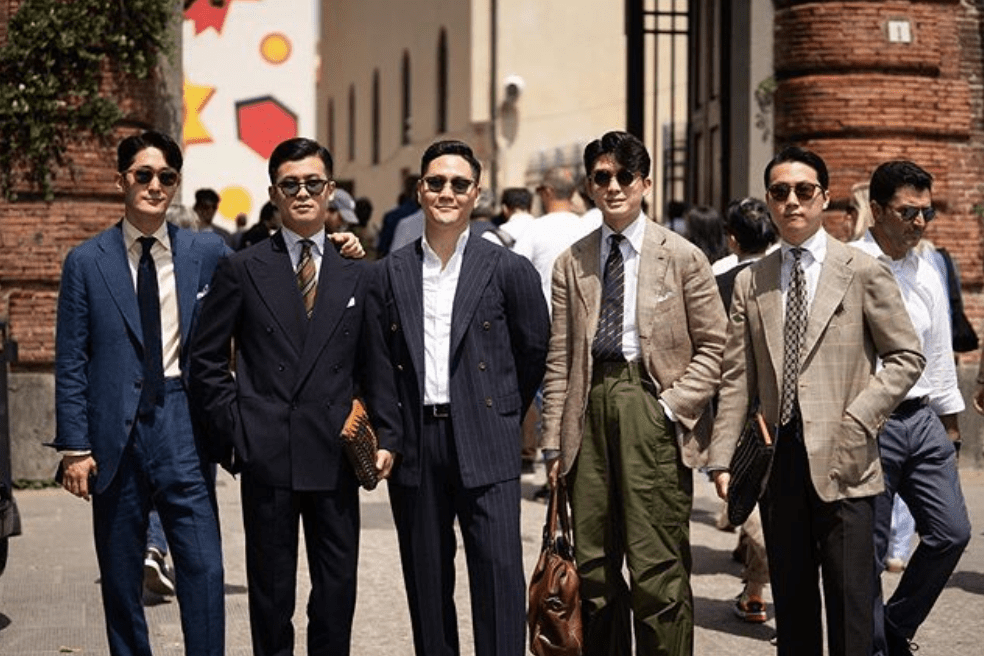
It’s no surprise that many think of the British and/or the Italians as being the world’s most stylish populations, as the two major classical tailoring traditions originated in Italy and Great Britain. That said, the stylistic influence of these two countries has since spread far and wide, giving birth to variations that have developed their own well-deserved reputations for refinement. In this article, one of a series on classic style in different areas of the world, we look at the best dressed gents of China (including Hong Kong), Japan, and South Korea to get a sense of classic style in East Asia.
Armoury Style: Classic Fit
Any conversation about classic menswear today in relation to Asia should probably begin with The Armoury. Founded in 2010 by the trio of Mark Cho, Alan See and Ethan Newton, The Armoury (perhaps more than any other brand) has come to represent a Hong Kong style that has also spread to the West via the company’s New York location and the globalization of the Internet. When viewing The Armoury’s lookbook, the company’s aesthetic is immediately apparent and reflects features that seem popular among well-dressed Asian gents in general. The style pioneered by The Armoury is also found in recently established Asian boutiques like Andrea Seoul and B&Tailor in South Korea, The Ficus or Brio in mainland China, and Brycelands in Japan.
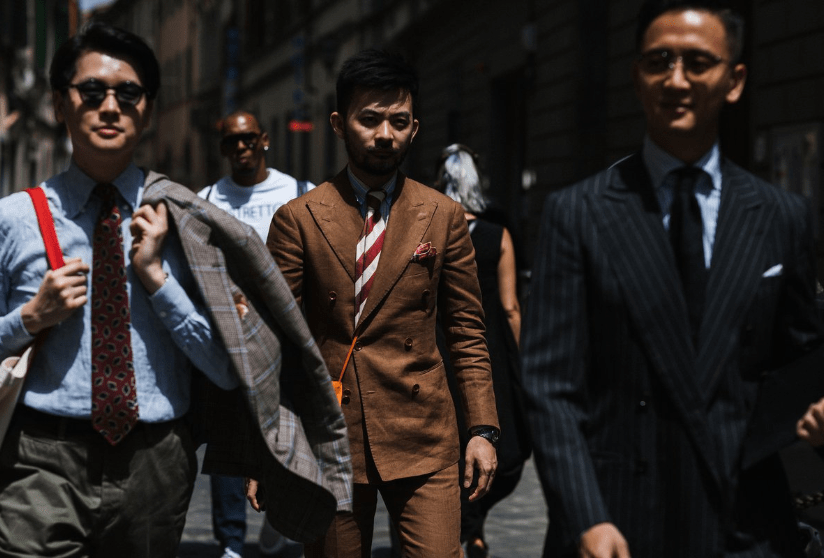
Jackets are cut full with more room in the arms and chest, and can have extended shoulders. Pants have a higher rise and often have one or two pleats, as represented by the brands Ambrosi, Pomella and Rota. They may be tapered but always have some room in the legs; slim fit is not widely represented. Overcoats from brands like Coherence are likewise ample rather than fitted. Overall, roominess or comfort is a strong feature in all garments.
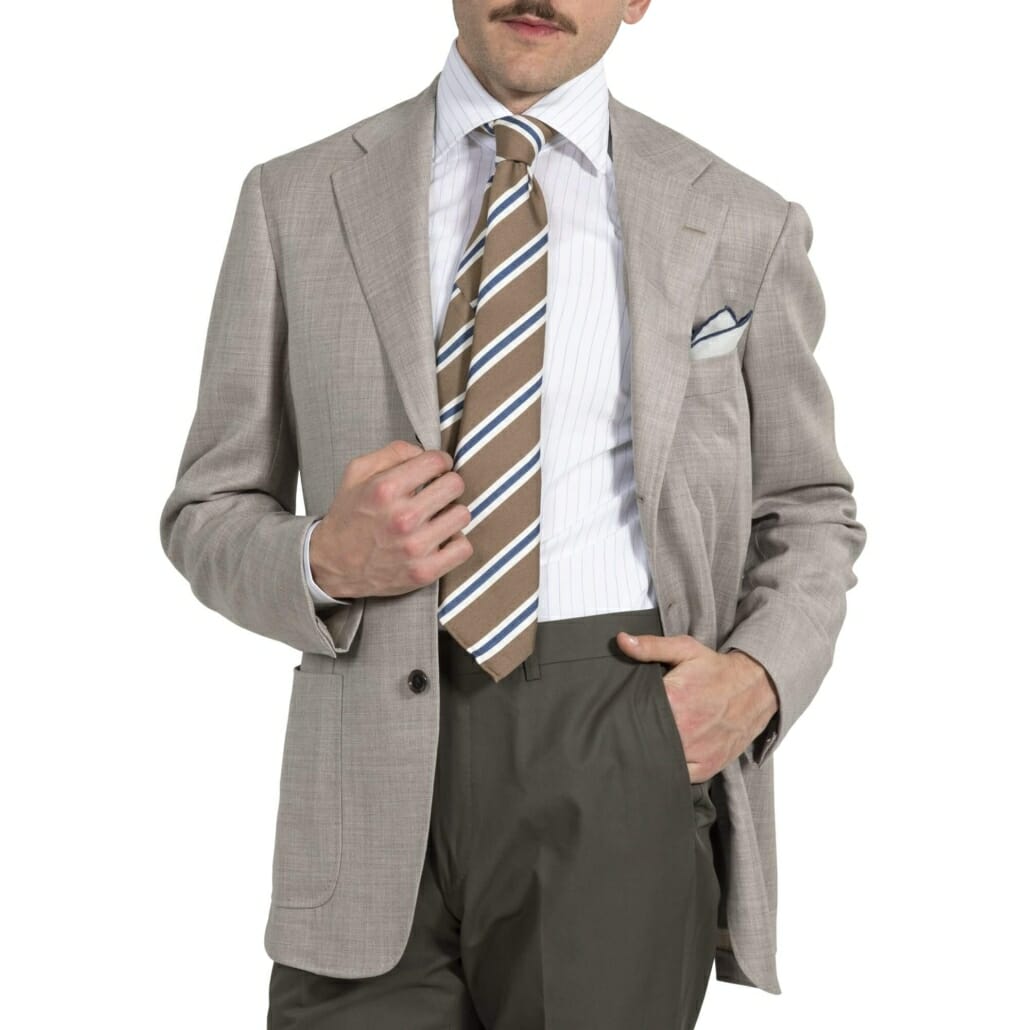
In terms of cloth we find conservative fabrics overall, with no garish patterns or shocking colors. Lapel sizes are not extreme. Items have a strong Italian influence–major brands are Orazio Luciano and Musella Dembech suits–but there aren’t any tight clothes; everything is suitable for the professional workplace or comfortable weekend wear that won’t stand out too much.
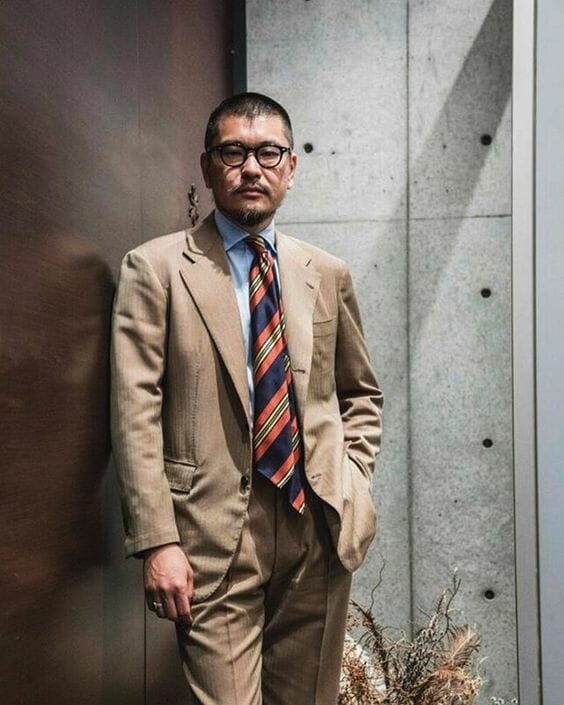
These features seem popular among well-dressed Asian gents in general, and are also reflected in the house style of other menswear companies in the region, such as bespoke makers B&Tailor in South Korea and Prologue in Hong Kong. Indeed, the founder of 100 Hands shirts, Akshat Jain, has observed that men from East Asia prefer their shirts to be fuller, looser, and roomy–what we’d term “classic fit” rather than the characteristic skin-tight style of some Italian makes.
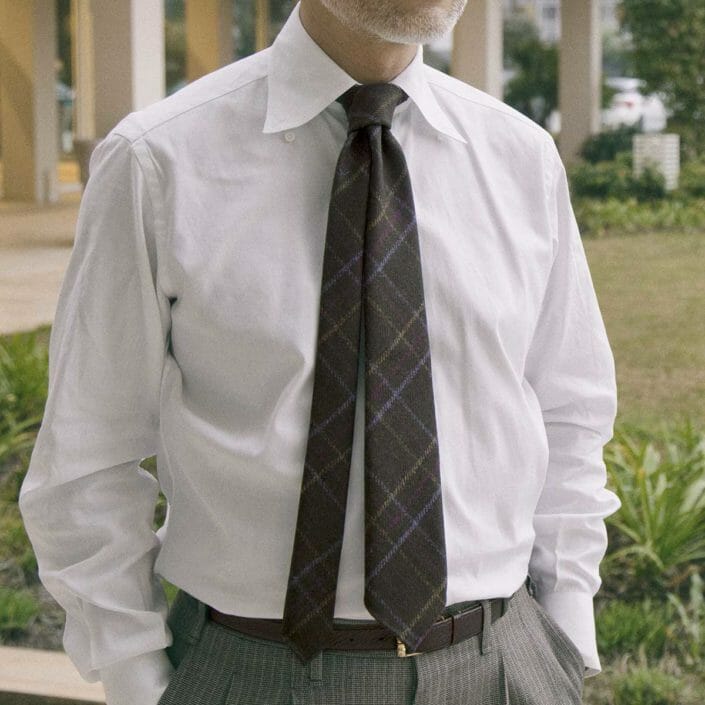
A Blending of Influences
One characteristic of Asian style is how it takes aspects of the great tailoring traditions of Great Britain and Italy, and makes something different out of them. Although this may be true about the style of any “third-party” country or geographic area, Japan represents this best. The nation has developed a reputation for mastering the ability to process outside ideas into something unique–whether it’s their system of writing (which originated in China), Portuguese fried food, or American comic books and cartoons. One Asian brand that embodies this is Ring Jacket, which combines Japanese quality and precision with Italian style. This melding of styles has been touted not only by the company itself, but by the likes of GQ, who call them “the most cosmopolitan suiting brand out there.”
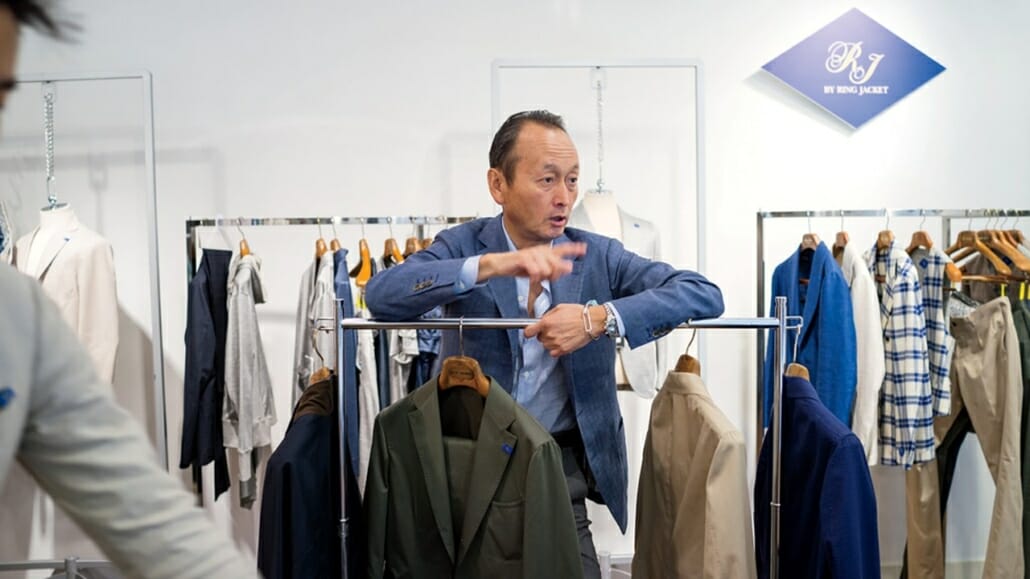
Current president Kunichi Fukushima travels frequently to Naples, with the aim of improving on Neapolitan tailoring from a Japanese perspective. Besides the patch pockets, natural shoulders and well-fitting body of Italian tailoring, we see Japanese innovation in a Ring Jacket shoulder that seems impossibly wide for a given size but somehow fits beautifully, or in the development of new fabrics like low-maintenance “Calm Twist” and “Balloon” wool that travel and breathe well while not wrinkling easily. As an added layer, Ring Jacket began as an Ivy-League inspired company and touches of that still come into play (more on Ivy influences below).
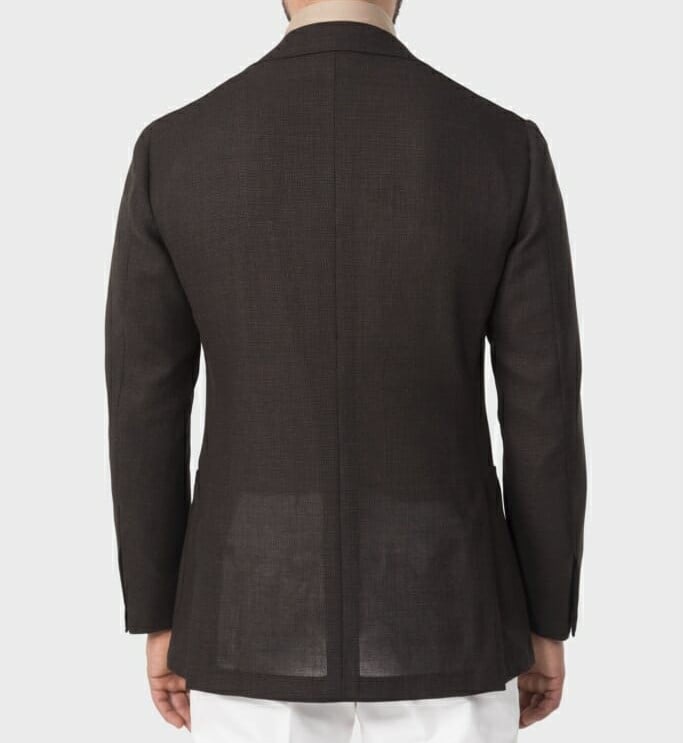
Such deliberate efforts to bring together cultural influences to create a unique style is a driving principle echoed by the young generation of Japanese craftsmen, who have apprenticed in Italy and either brought their knowledge back home or remained. Some prominent examples jump to mind: bespoke shoemaker Hidetaka Fukaya (“Il Micio” or “the Kitty”), in Florence; Noriyuki Ueki (“Il Ciccio”) who studied for decades in Italy and returned to Japan to open his own bespoke atelier; and Kotaro Miyahira, who runs Sartoria Corcos, located in Florence.
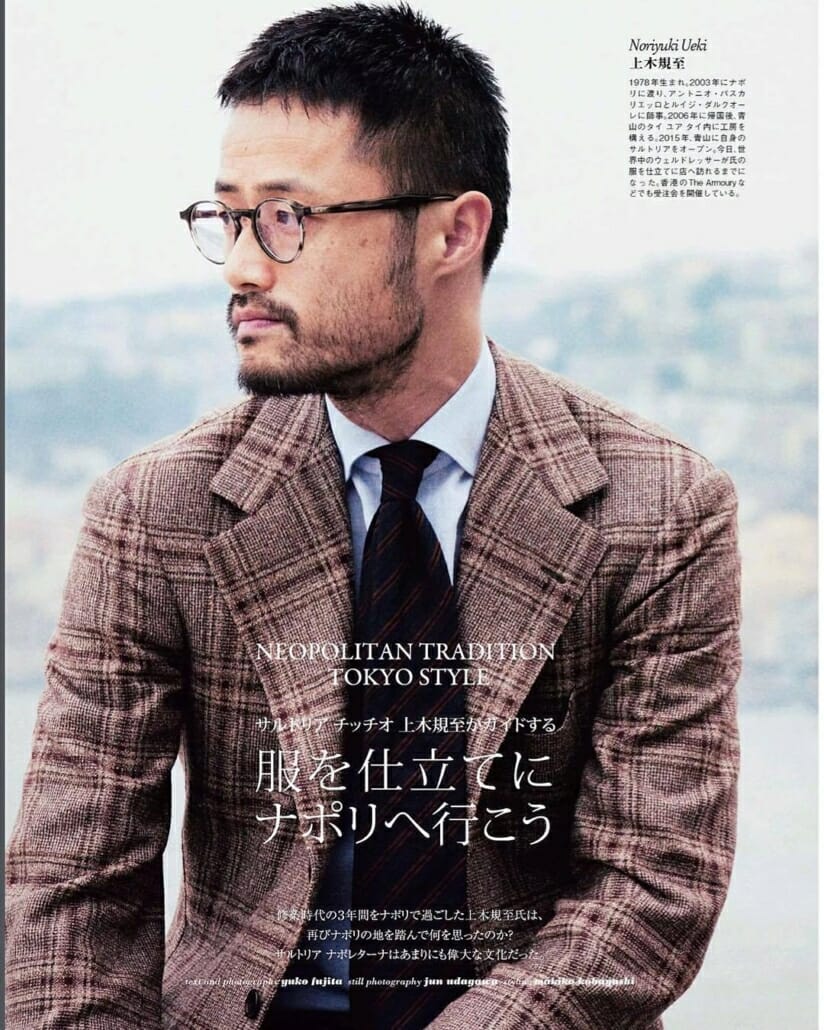
Interestingly enough, their talents have received attention mainly in the West, showing that what we might call “Asian classic menswear” really has global appeal. The quality of Il Micio’s bespoke shoes makes him one of the best in the world, while Sartoria Corcos is in such high demand from gents all over the world that it has had to stop taking new customers.
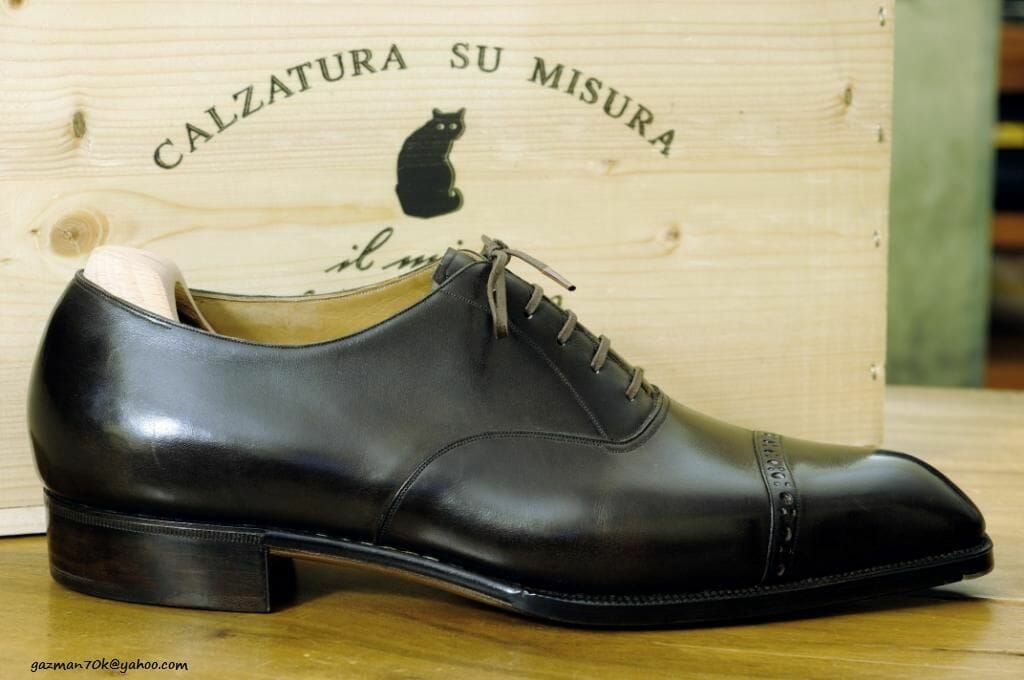
The common refrain is that Asian artisans take the best of Western tailoring and add a layer of meticulous attention to detail, including skilled handwork that can be spotted when it is worn. W. David Marx describes this in his book Ametora about the Japanese absorption and processing of American style:
There is a precedence in this idea of “copying toward innovation” in the pedagogy of traditional Japanese arts. In flower arrangement and martial arts, students learn the basics by imitating the kata, a single authoritative “form.” Pupils must first protect the kata, but after many years of study, they break from tradition and then separate to make their own kata—a system described in the term shu-ha-ri (“protecting, breaking, and separating”).
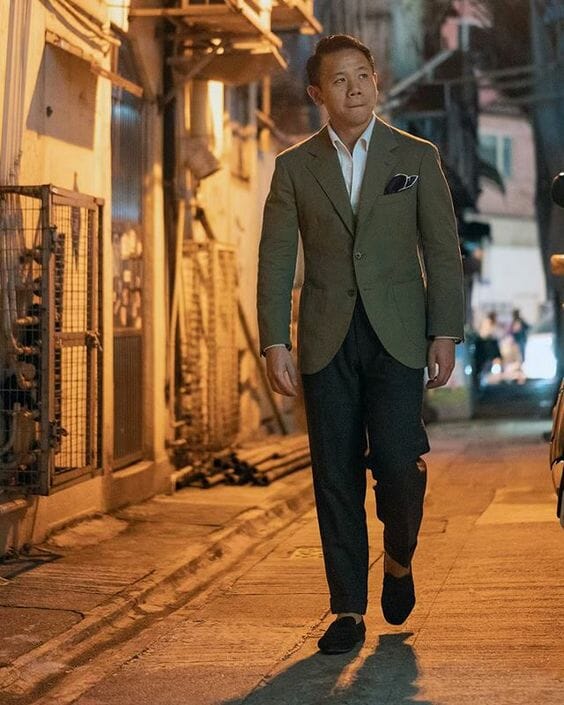
The individuals and companies contributing collectively to make what we can call “Asian tailored style” embody this ability to master a craft and turn it into something original. For some time, clothing made in China or Japan has been mocked as being of inferior quality, and this reputation has not gone away with the continued reliance on cheaply made Chinese goods at fast-fashion brands. Still, those who scorn disposable clothes can find plenty of high-quality tailoring in Asian menswear.
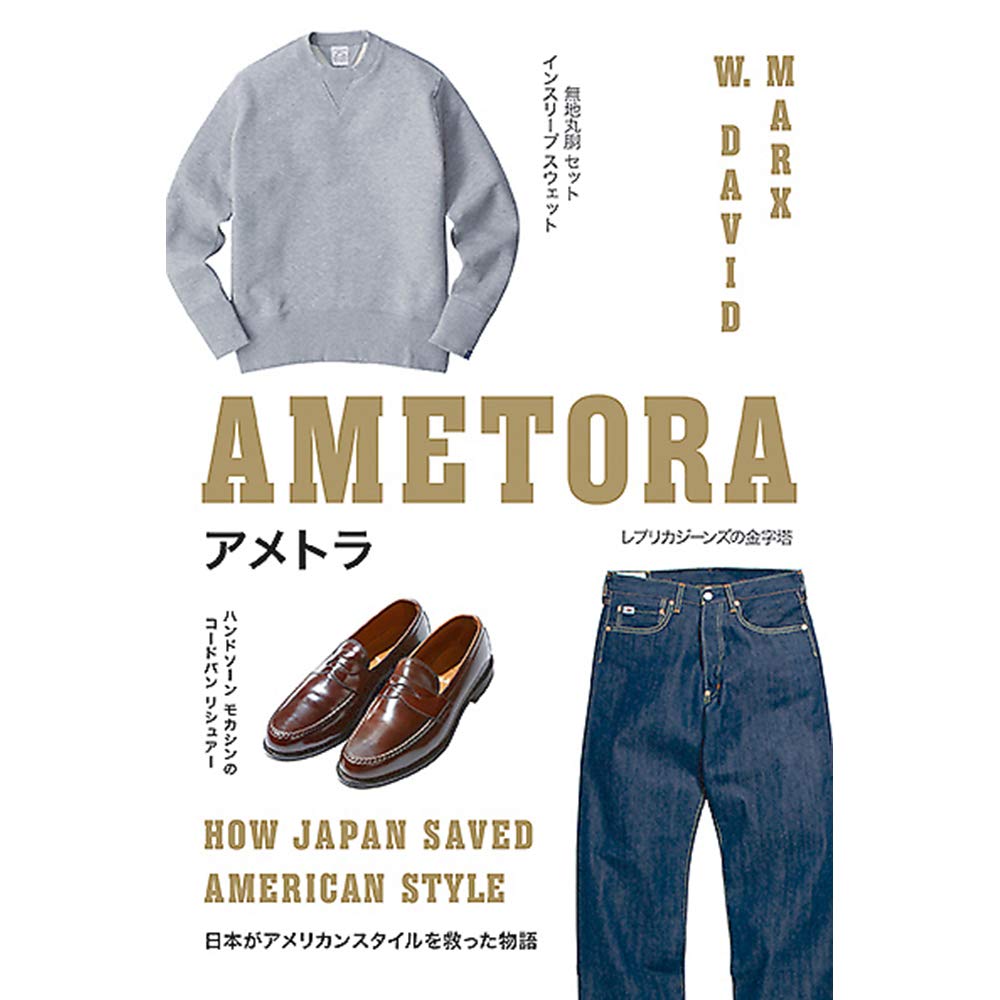
Japan and American Ivy Style
It’s no secret that the Japanese love American Ivy style. Ametora is the Japanese term for “American traditional,” and aivii riigu (Ivy League) was part of it, marketed as an idealized representation of America in the decades following World War II. The trend began in the 1960s with the younger generation of Japan’s elite, resembling the origins of Ivy style in the United States. Dressing in an American Ivy style was intended as a form of fashionable rebellion against the monochrome black school uniforms young men were expected to wear everywhere, again similar to how the East Coast elites originated it as a way to make the classic menswear dress code of their fathers into something less stodgy.
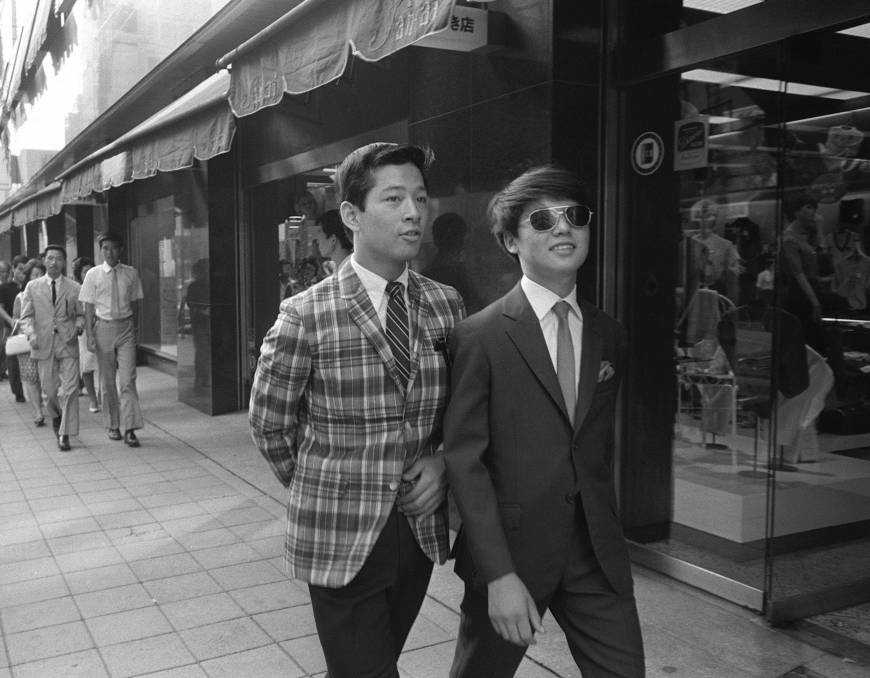
Though it wouldn’t remain the “it” thing, the timelessness of Ivy style and its offshoots of trad and preppy would continue in an additional Ivy revival of the 1970s, when American retailers Brooks Brothers and J. Press both opened stores in Japan. Author W. David Marx notes, however, that the endurance of the style was dependent on its being recreated in the country and made uniquely Japanese, similar to the fusion of Italian and Japanese approaches to tailoring discussed earlier.
In turn, the Japanese take on ametora has helped shape the global conception of the style today; one need only look at the continued appearance of button-down collars on Kamakura shirts or browse the men’s tailoring at the Japanese department store Beams to see the longevity of Ivy. With the global #menswear movement, Ivy is still clearly represented in the style of Japanese Instagrammers and clothing lines, as it is globally–but this continued vitality owes as much to the Japanese promotion of the style as it does to the timelessness of the look.
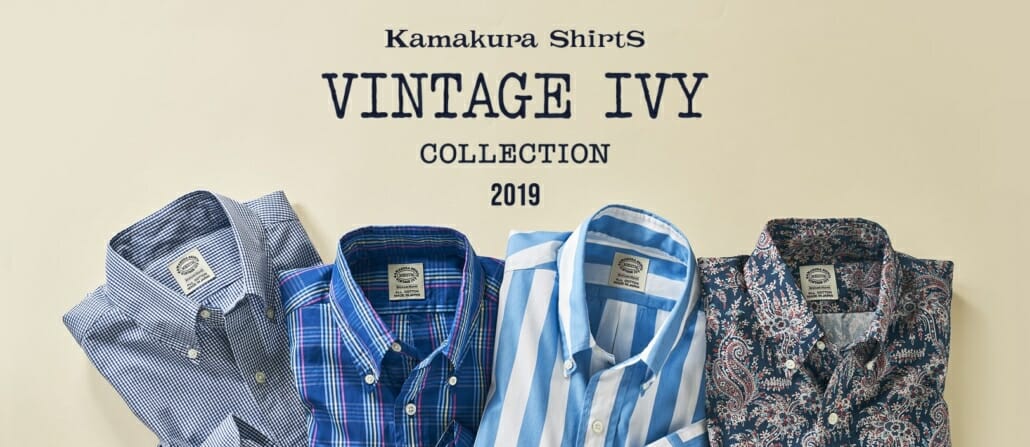
Vintage Appeal
A related aspect of this interest in American style is the Japanese love for American workwear, which reached a peak in the 1990s. Nowadays, it can be seen in the workwear-inspired clothes for sale at Brycelands and in the rise of selvedge denim, which has also translated to the West. In the realm of a more formal style, the enthusiasm for Levi’s from the 1950s and 60s speaks to a larger appreciation for tradition and a strong sense of history, something that Gentleman’s Gazette readers can appreciate.
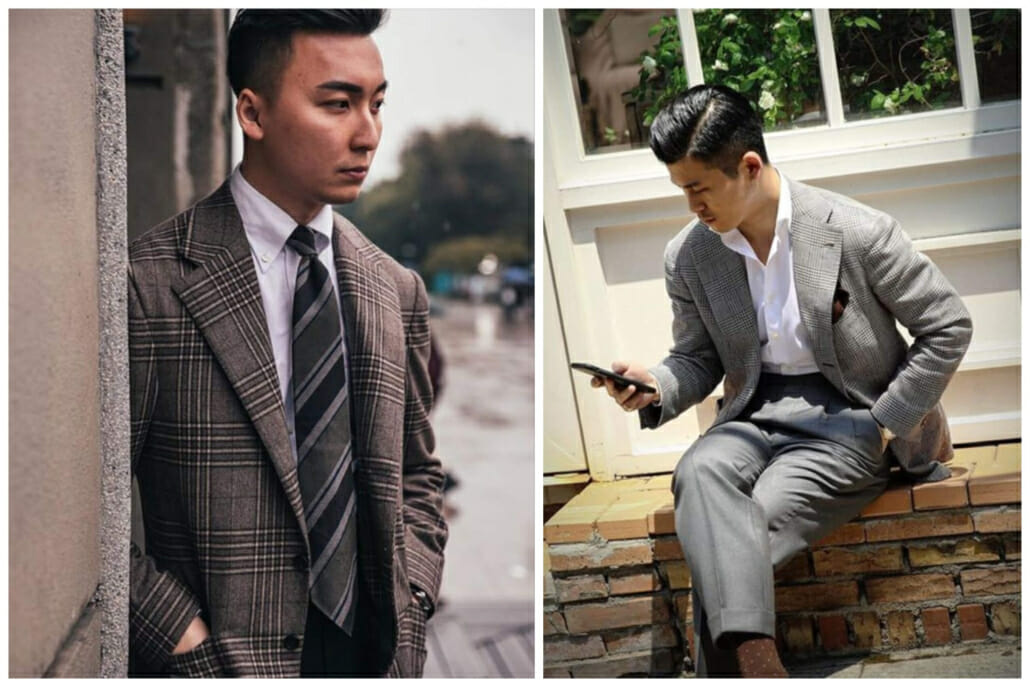
Vintage also appears in Asian tailored looks, represented by features like lower gorge height of Prologue bespoke in Hong Kong, or the “Hollywood waistbands” of the higher-waisted, pleated pants sold by Andrea Seoul, as well as in the overall look and style of suit-and-tie combinations. Kenji Kaga’s “Tie Your Tie” brand is specifically known for recreating and improving on vintage ties from the 1940s and ’50s. Looking at the ties, their retro connection is apparent, and Kaga has spoken about working to ensure his contemporary creations capture the dry hand feel, muted colors and matte finish possessed by vintage neckwear.
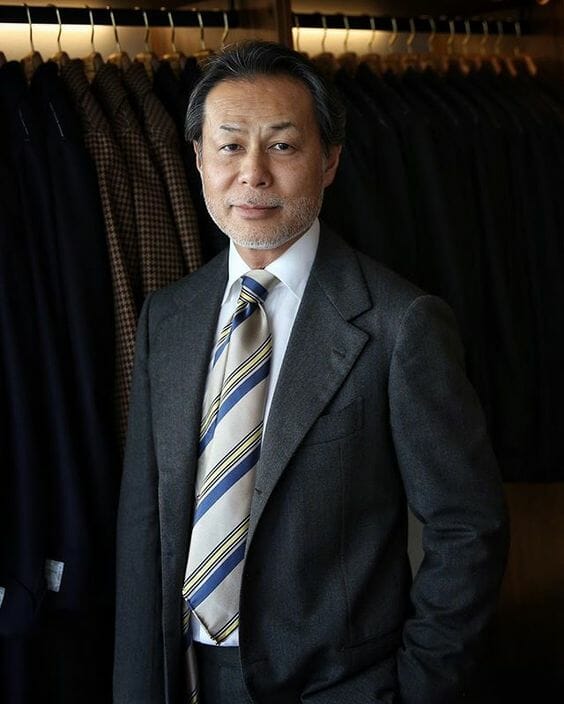
Individualism in Asian Menswear
One surprising element that defies stereotyped expectations of East Asian menswear is the individualism of many outfits. Of course, just as the so-called “influencers” at Pitti Uomo don’t represent everyday dress, the clothing of Asian gents on social media isn’t exactly common; nonetheless, these outfits show a creative individuality that flies in the face of the conformity attributed to Japan and East Asia overall.
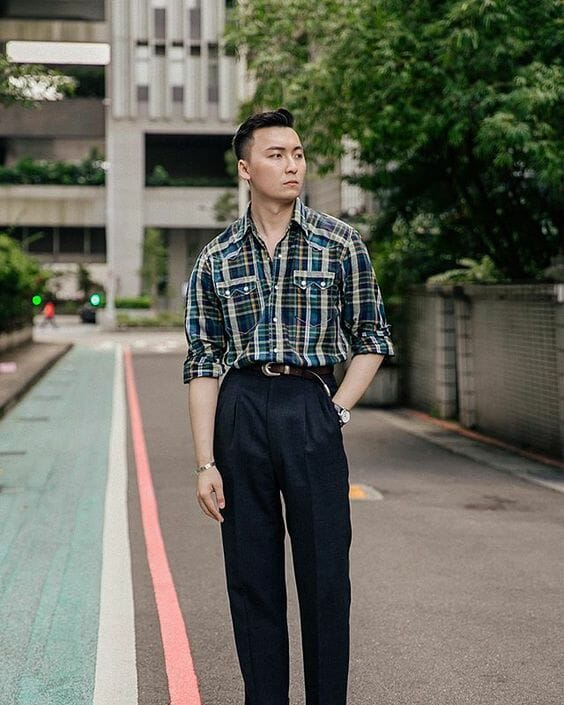
Conservative outfits aren’t the only thing worn, and even if Asian men tend to reference tradition in their tailored style, there is room for creativity. This is seen most often in close attention to combining and layering color and texture, as well as pursuing unconventional pairings that still somehow work. Instagrammers like take:it.easy.7, and riki.saito_0727 display a sense of fun while breaking the notion of legions of staid, sober “salarymen” in dark worsted wool suits.
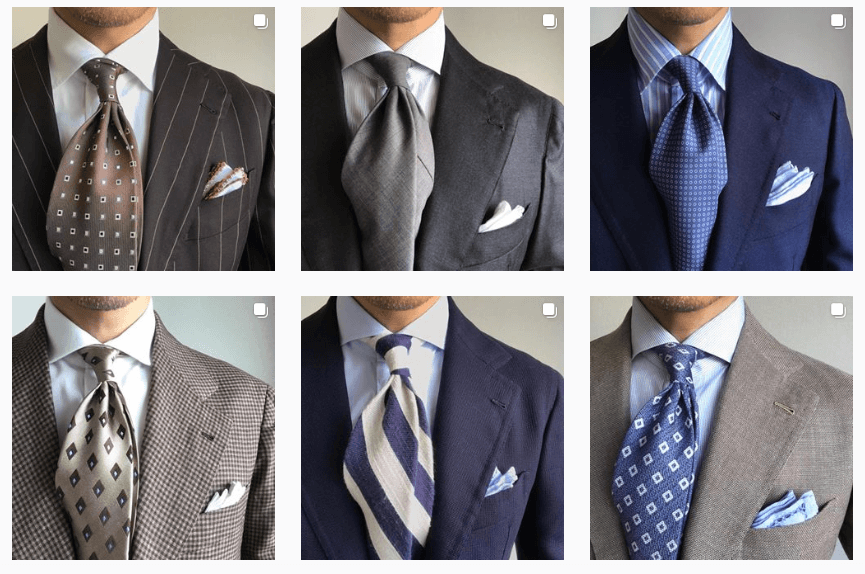
Conclusion – The World of Asian Menswear is Vast & Varied
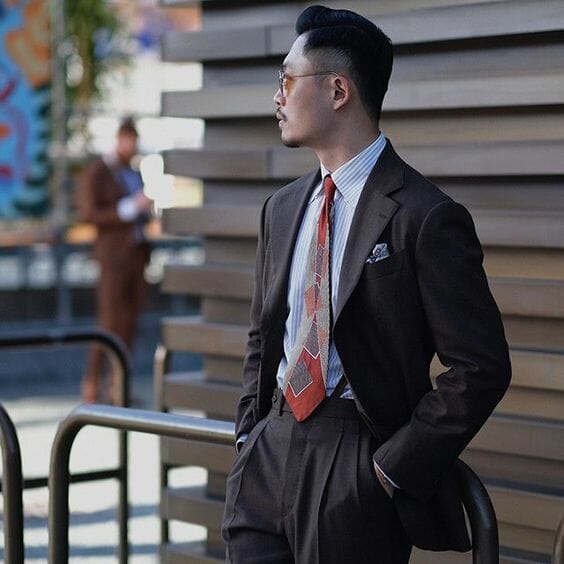
Of course, it is nearly impossible to characterize the men of an entire geographical area in terms of how they represent classic menswear; to a large degree, to speak of “Asian classic style” is a category of convenience that omits differences between countries as well as individual men, just as it would be to speak of European or North American style. However simplified it may be, it is nonetheless a useful way to pinpoint certain stylistic tendencies and features based on the evidence of menswear marketing and social media. While there’s no substitute for sartorial travel, we can also browse the Internet to get immediate inspiration from well-dressed gents in Asia.
What’s your take on the various styles exemplified by the Asian menswear sphere? Do you have a favorite style? Share with us in the comments.
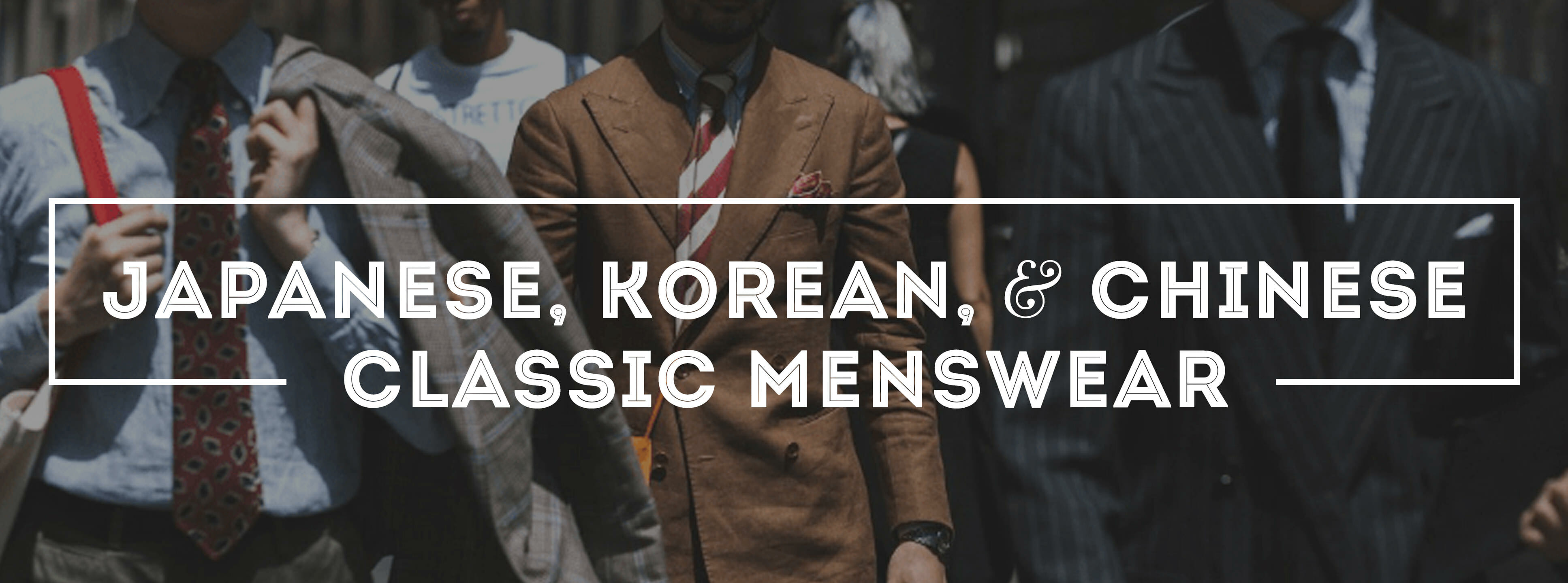
Indeed I have a STRONG preference, other than style end independent of whether like the design (in this far-eastern case) or not.. Extra tall and large sizes! This is an issue even in Europe. Do you think that af all peoples the Chinese and Japanese with deliver BIG?
I really like the style, i am going ahead and checking all websites, inquiring with all companies. Thank you so much for the many pointers. Go east, young man, this is new territory!
Another excellent article! Congrats, doctor. One must reckon that 2Asian style” is certainly appealing and worth considering. After all a gentleman takes his good where he finds it…
How about an interview with Dr. Lee?
That’s a good idea!
Glad to hear that!
Interesting read. The article definitely has done a wonderful job introducing audience who are not that familiar with tailoring houses in East Asia.
However, my first reaction when I saw the title ‘Classic Asian Styles’, I was picturing Prologue’s Mandarin jacket, kimonos, or even the cheongsam. Those are the real classic wear in Asian cultures, after all.
Also, apart from the Japanese interpretation of the Ivy style and Bryceland’s/ Kris’ style, some of the outfits by some Instagram influencers showcased in the article is something very commonly seen on gents from other parts of the world too.
I suppose it would have been a better idea to state out that it is the tailoring cut that is different, with a blend of British and/ or various Italian style. Just a thought.
Some of the “comfortable” clothes pictured are just ill fitting, but the article itself fits perfectly. More articles on Asian dandy topics please.
These are not ill fitting clothing…just different from the skin tight stretchy clothing popular now which to a person of my age..54..ill fitting.
I’m exceptionally excited to see this article pop-up in my inbox! All of these individuals are fellows who I’ve been following for a while now after having been introduced to them by reading Street X Sprezza by Ethan Wong. Their representation of Ivy meets Militaria while still feeling appropriate in certain business situations is exactly how I like to dress.
As a university student, I highly suggest looking at these men for inspiration on how to have fun with your clothing – to wear it, not have it wear you. Thank you for bringing this to the greater Gentleman’s Gazette community, Dr. Lee and Mr. Schneider!
Nice fresh looks.
What a great article. I love that Asian style as presented harks back to more comfortable classic dressing. Many things to admire. By the way, the toe of those Italian shoes featured is very stylish.
Great article! In my mind the Hong Kong style is more based on the British style, Japanese the American style, Korean the Italian style.
Han. I like those parallels a lot and think they’re accurate.
Thank you for a timely treatise on Asian style Dr Lee, it opens up a different and I dare say unknown world to the audience of GG. If I could suggest two names –
Issey Miyake and Yuji Yamamoto and draw attention to their vast contributions to Asian style.
These styles are completely amazing. In fact there’s no one hotter than a nicely dressed Asian man.
Wonderful, excellent article! Keep up the good job.
Very interesting article, I sure agree with the comfort fitting.
Thank you for bringing this article.
How are you gonna post an example of Japanese youth in the ’60s wearing Ivy style and make no mention of the miyuki-zoku?
Nice piece; but how you could leave out Yukio Akamme and Yasuto Kamashita is quite astonishing. They are easily among the best dressed men on the planet.
I love what I see and I am intrigued. At 5’7″ and 150 lbs I am closer in stature to an Asian gentleman than I am your typical American. Having seen your videos on clothing for shorter and slimmer men, much of the focus on fuller cuts, pleats and exaggerated shoulders of the modern Asian looks seems to contradict some of the guidelines suggested by your prior videos for gentlemen my size. I would like to explore these Asian styles, but am a bit fearful of investing in quality garments they produce that might be unflattering for me. I do share the Japanese affinity for the Ivy look and find the fuller cuts of traditional vintage Ivy garments to make me feel like I am wearing a billowing tent. Any suggestions on where to get started would be appreciated.